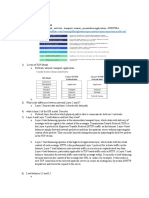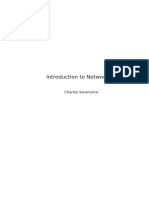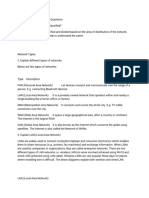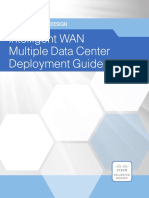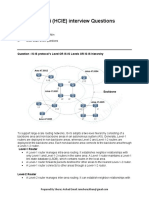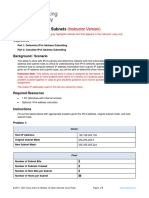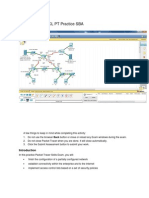Sheet Linux / Networking
Main Page 1
�Main Page 2
�0. What is a VPC?
Main Page 3
�0. What is a VPC?
A VPC is your own private network inside a public cloud.
1. What is a subnet?
A subnet is a smaller part of a big network. It helps organize and control network traffic.
1. Subnetting vs super netting?
• Subnetting splits a network into smaller ones.
• Super netting combines smaller networks into a bigger one.
1. What is network segmentation?
It is splitting a network into smaller parts to improve security.
1. What is CIDR?
CIDR is a short way to write IP address ranges, like 192.168.0.0/24.
2. What is a firewall?
A firewall is like a security guard. It checks network traffic and blocks bad or unwanted traffic.
3. What is NAT?
NAT hides private IPs by changing them into one public IP. This lets many devices share one public IP.
4. What is DNS?
DNS is like a phonebook for the internet. It changes website names (like google.com) into IP addresses.
5. What is a VPN?
A VPN makes a safe and private connection over the internet. It hides your data from others.
6. What is a load balancer?
A load balancer shares traffic between many servers. This makes apps fast and always available.
90. What is auto-scaling?
Automatically adding or removing servers when traffic changes.
7. What is the OSI model?
The OSI model has 7 layers that explain how data moves in a network, from cables to apps.
27. What is traceroute?
Traceroute shows the path your data transfer across the network.
28. What is port forwarding?
Port forwarding lets people outside access a specific service inside your network.
10. What is an API?
Its bridge like communication between software and services || RestApi : GET , PUT …
26. IPv4 vs IPv6?
IPv6 has a lot more IP addresses than IPv4.
25. TCP vs UDP?
• TCP is reliable and checks delivery.
• UDP is faster but doesn’t check delivery
11. What is a proxy server?
A proxy is a middleman between you and the internet. It adds privacy, security, and can speed things up.
31. What is a reverse proxy?
A reverse proxy hides your servers and sends requests to the right server.
12. What is bandwidth?
Bandwidth means how much data can travel through a network in one second.
Main Page 4
�85. What is serverless architecture?
You run apps without managing servers. The cloud does it for you.
87. What are microservices?
An app built as many small services instead of one big program.
88. What is SSL offloading?
A device (not the server) does the SSL work, making servers faster.
89. What is network elasticity?
The ability of a network to grow or shrink resources when needed.
91. What is Infrastructure as Code?
Managing infrastructure (servers, networks) with code instead of manual steps.
92. What is container orchestration?
Automatically managing containers (like Docker) using tools like Kubernetes.
96. What is instance metadata?
Information about a cloud server, like IP and region.
97. What is disaster recovery?
Restoring data and services after a failure using backups (often in the cloud).
100. Types of firewalls?
• Packet-filtering
• Stateful
• Proxy
• Next-gen firewalls
19. What is SSL/TLS?
SSL/TLS encrypts data when you visit websites so no one can steal it.
24. What is VLAN?
A VLAN splits one physical network into smaller virtual networks.
38. What is encapsulation?
Encapsulation is wrapping data with extra info so it can travel through the network.
39. What are network topologies?
It is the way devices are connected, like star, mesh, bus, etc.
41. L2 vs L3 switch?
• L2 switch uses MAC addresses.
• L3 switch uses IP addresses and can also route traffic.
47. What is DDoS protection?
It protects servers from huge traffic attacks that try to make them stop working.
48. What is tunneling?
Tunneling hides one type of network traffic inside another type, often for security.
49. What is RDP?
RDP lets you see and control another computer over a network.
55. What is latency optimization?
It’s making the network faster by reducing delay.
64. What is a loopback address?
Main Page 5
�64. What is a loopback address?
It is 127.0.0.1. A computer uses it to test itself.
65. What are network ACLs?
They are rules to allow or block network traffic.
70. What is dynamic routing?
Routers change paths automatically when the network changes.
Main Page 6



